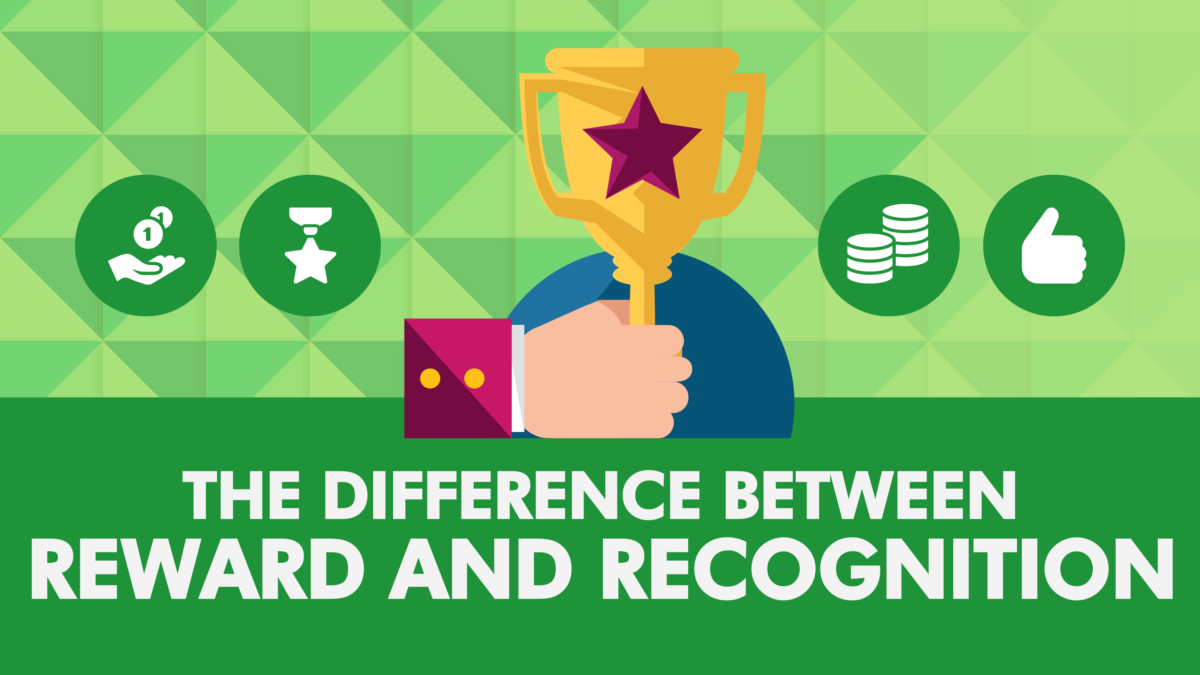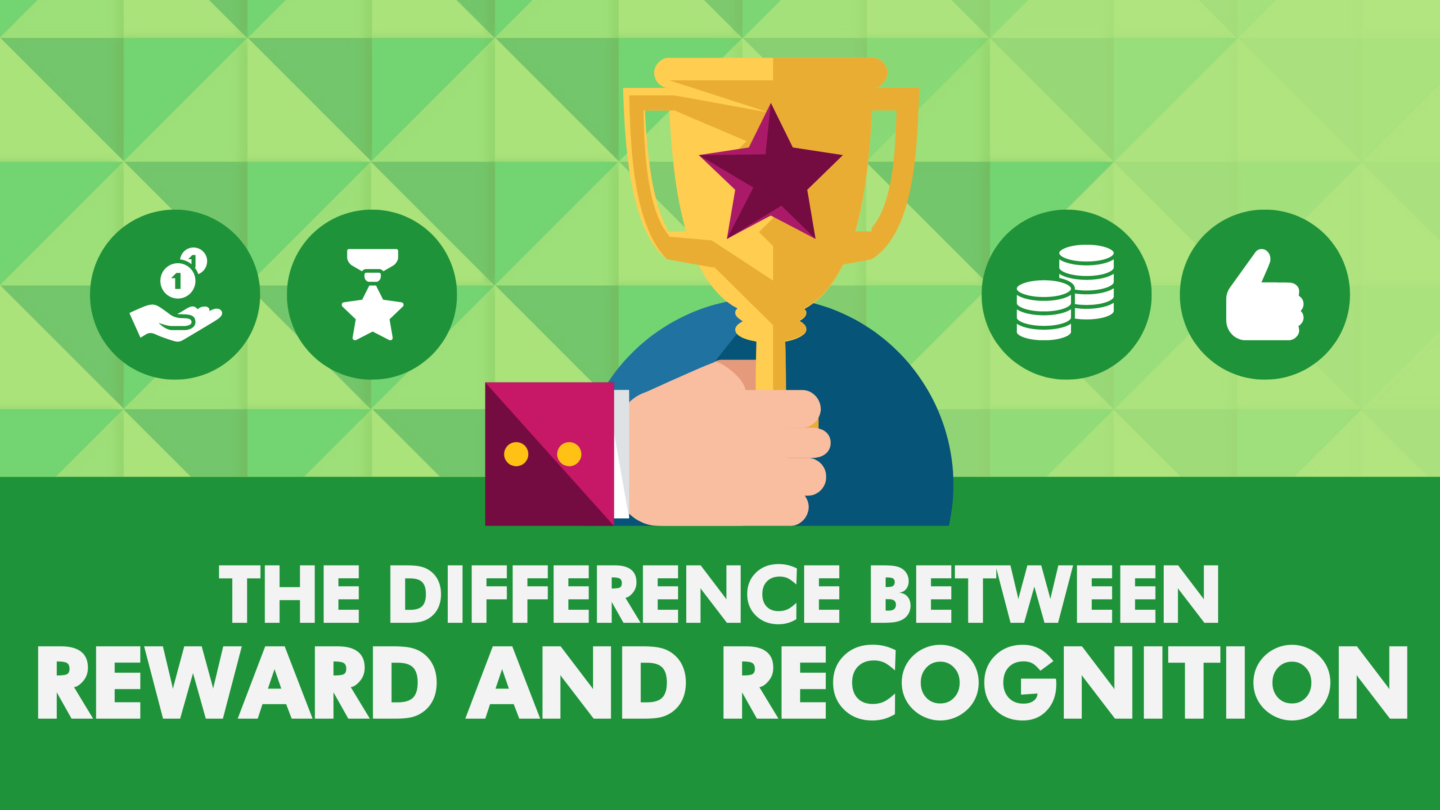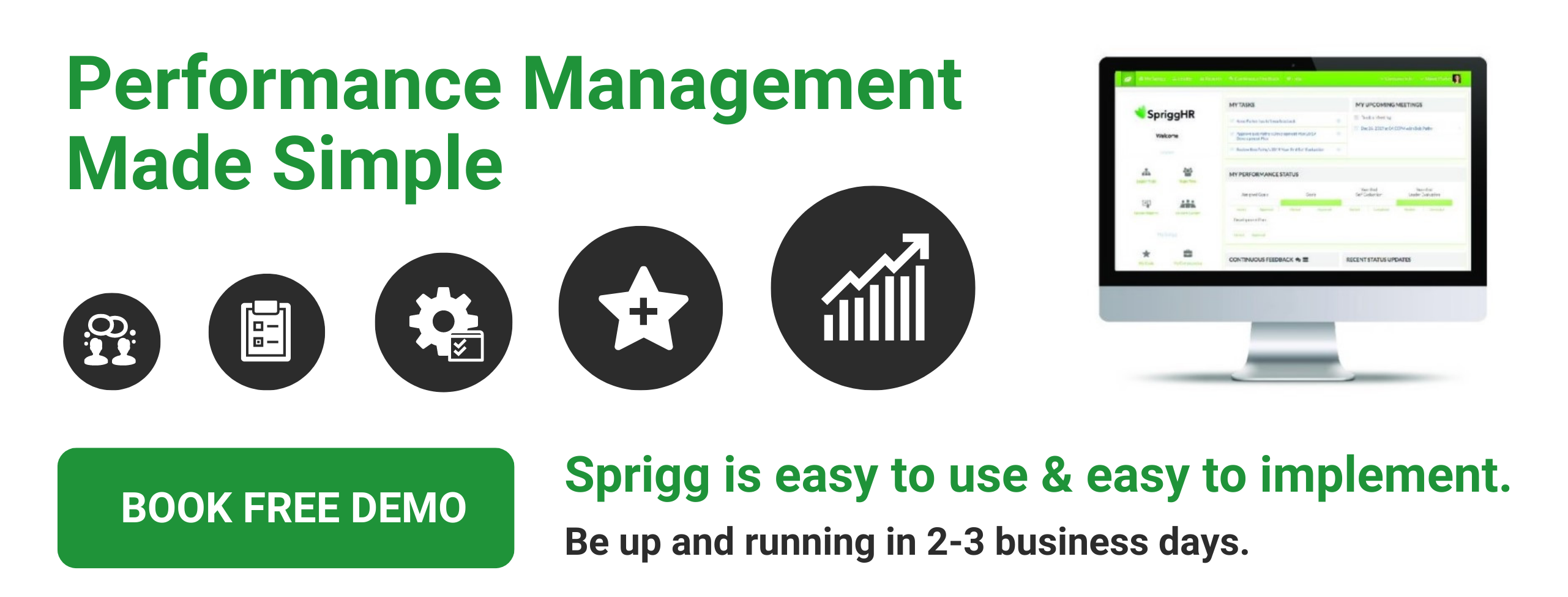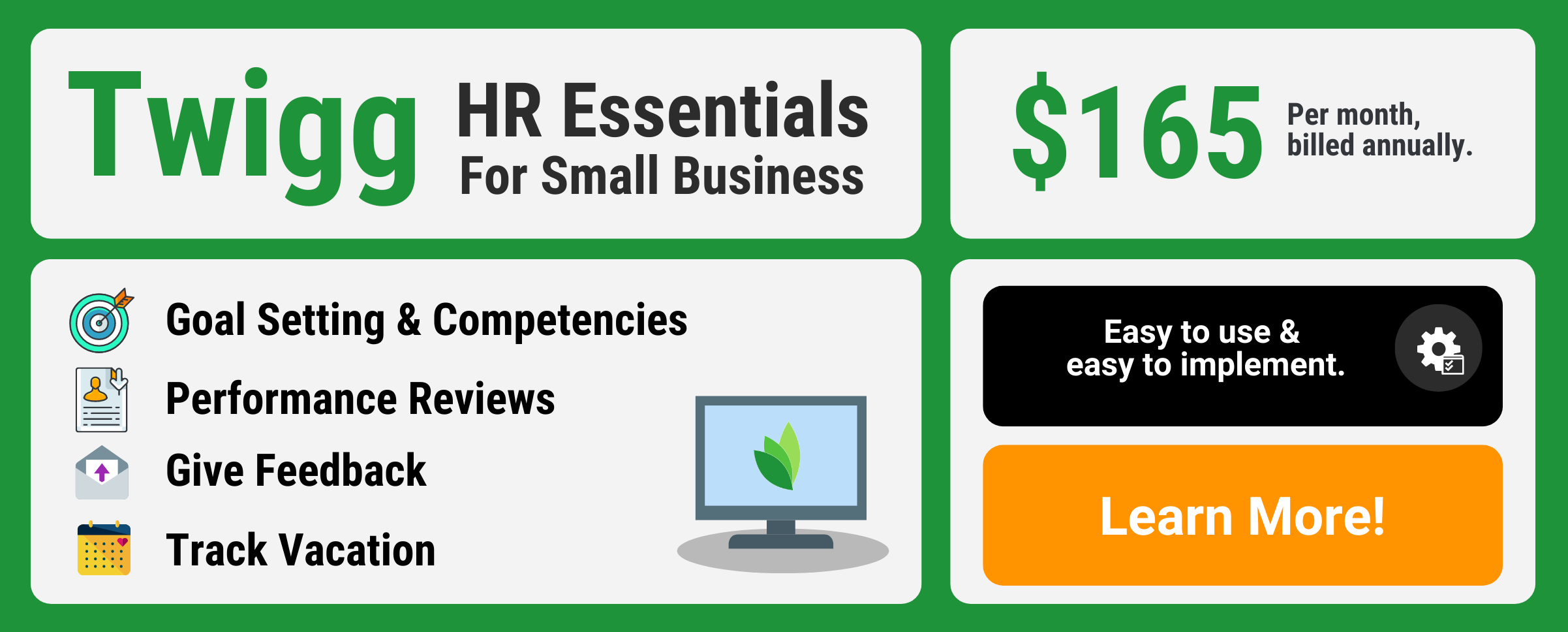
The Difference Between Reward and Recognition
In order for your employees to feel fully satisfied in their jobs, they will need much more than just a pay check. While offering competitive pay is critical to recruiting the top talent in your industry, it is important to have a program that covers both rewards and recognition if you wish to attract and actually retain high performance employees. However, many professionals fall into the trap of assuming these two terms are interchangeable. In order to glean the best results from your organization’s employee reward and recognition program, it is important to first de-couple these two terms, and identify their key distinctions.
What is the Difference Between Reward and Recognition?
As you develop your reward and recognition program, aim to first thoughtfully consider and understand the key differences between these two areas of employee incentives. Once you have a clear picture of how they differ, both in nature and in practice, you will be able to accurately assess where and when the deployment of each is most appropriate.
Listed below are the 10 key distinctions you should draw between reward and recognition:
| REWARD | RECOGNITION |
| Tangible: rewards are usually things that you can touch, feel, and experience, and are distributed to employees in a specific amount. | Intangible: recognition is invisible by nature, and is in some cases, priceless in terms of its value. |
| Transactional: rewards are dealt out in a context of an exchange of action – that is, only if the employee does “X” will they be given “Y” in return, e.g., targets met | Relational: recognition is focused on a relational exchange between you and the employee. |
| Consumed: once an employee receives an award, it is usually spent or consumed. | Experienced: when an employee is recognized, it is a personal experience that they undergo, and hopefully a memory they retain down the line. |
| Transferrable: since rewards are usually temporary in nature, they can be transferred or shared between individuals. | Non-Transferrable: recognition is internalized by nature, meaning it is impossible to transfer to another individual. |
| Conditional: the distribution of rewards hinges on certain terms and conditions, and are often ruled by consequences. | Unconditional: recognition acts independently, and is not part of a fixed outcome that derives from specific actions or behaviours. |
| Expected: when an employee is performing well, they often enter into a state of expectation and anticipate a reward being lined up for them. | Unexpected (usually): recognition is not necessarily linked to expectation, so when an employee is recognized for their performance, it often comes as a surprise. |
| Economical: rewards offer a discreet, targeted use of your company’s resources. | Emotional: rather than utilizing discreet resources, recognition is more psychological and emotional in its nature. |
| Outcome: rewards are used to emphasize an employee’s achievement and results. | Behaviors: recognition has no fixed time of occurrence, so it can take place any time an employee’s positive behaviors are recognized. |
| Fixed: rewards are pre-determined and have a fixed value and amount based on desired performance, and the expected outcome. | Free-Flowing: recognition is flexible in nature, flowing between peers and expanding when the sentiment is shared and commented on by others. |
| Impersonal: rewards usually have very little human dimension, largely due to their tangible nature and their fixed position on documented performance indicators. | Personal: recognition has a purely human element, since it directly celebrates an individual for who they are and what they have accomplished. |
Creating an Employee Reward and Recognition Program
Once you have gained a thorough understanding of how rewards and recognition differ in their nature, you can begin crafting an employee reward and recognition program that ensures your response to employee achievements and results is always appropriately directed. The first step is to understand just how the distinctions we have laid out will interact when put into action:
- Tangible vs. Intangible – an individual can be recognized without being given a reward, but a reward should never be doled out without being coupled with recognition.
- Transactional vs. Relational – rewards are useful for attracting top talent to your organization, and recognition is mandatory for retaining that talent.
- Consumed vs. Experienced – carefully balancing how often you reward vs. recognize an employee ensures that the way in which the employee receives compensation for their achievements is appropriate and measured.
- Transferrable vs. Non-Transferrable – aiming to focus on recognition, and teaming it with reward where appropriate, will help your employees feel valued for their individual contributions.
- Conditional vs. Unconditional – blending rigidity in rewards, with the flexibility in recognition, and applying them either on their own or in combination over time at your discretion is critical.
- Expected vs. Unexpected – an individual should never be let down by being deprived of a well-earned reward, but you should also be spontaneous enough in your attitude to be able to celebrate and appreciate your employees each day.
- Economical vs. Emotional – performance and fixed outcomes of success are important to keeping employees motivated, but it is feelings (that is, satisfaction in being recognized) that rule the retention aspect of the employee experience.
- Fixed vs. Free-Flowing – fixed rewards allow for employees to have a clear picture of the expected behaviours they should be working towards, but a free-flowing culture of recognition will help keep them on their toes and productive on the everyday level.
- Impersonal vs. Personal – the impersonal nature of rewards can be remedied by always combining the dealing out of rewards with personal recognition for the employee.
Now that you have a clear sense of the key differences between the concepts of reward and recognition, and how they may interact when put into action in your program, it is important to understand some general tips for creating and implementing an employee reward and recognition program. Listed below are some of the key best practices you should follow when utilizing your program:
1. Identify What to Recognize
Outline and map out all of the behaviors and actions you will be looking for from your employees, and ensure everyone in the company has equal opportunities to receive recognition.
2. Make It Timely
To ensure the effectiveness of the reward or recognition you deal out, you need to act immediately when success is identified. Providing recognition or a simple reward as soon as you notice behavior you want to see repeated helps employees pinpoint what exactly you are looking for, and how they can go about receiving recognition themselves.
3. Do It Often
Employees crave recognition, so seeking out small and unique ways to regularly recognize their efforts and achievements keeps them satisfied.
4. Make it Genuine
Don’t stick to e-mail templates or automated responses when your employees are performing well. A sincere thank you, or a personalized recognition coupled with a reward, will go further.
5. Personalize It
As we have already mentioned, personalizing how you go about giving rewards or recognition to your employees is critical. If you are recognizing their achievements, praise them in a way you know the employee will be comfortable with. If the employee is shy and uncomfortable with loud, public recognition, be genuinely thankful and demonstrate your appreciation in a one-on-one discussion. If you are giving out a reward, select something that you know will be meaningful or impactful to that specific employee.
6. Aim for Collaboration
Including everyone in your employee recognition and reward program incentivizes them to keep up the good work even when you are not looking. Employees love being recognized, but they also enjoy recognizing the work of their peers. Encourage your team to praise one another often, and consider implementing a peer-nomination system into your rewards program.
7. Make It A Habit
By setting yourself a standard of regular recognition, it is much more likely to get ingrained into the company culture as a whole, and will transform into something every employee wants to be a part of.
8. Be Transparent
Doling out recognition and rewards is a great tool for demonstrating the type of behaviors you want all employees to exhibit.
9. Be Fair
Don’t just reward the same rotating roster of your top performers. Keep an eye out for the underdogs of your team, whose work is of high quality but may not be quite as obvious. In addition, never create company rewards that are only achievable by a certain group of employees or certain departments.
10. Include Remote Workers
Your employees working remotely are just as important as your in-office team members, but they can often feel disconnected from the office. Providing recognition and rewards to them as often as you do your in-person employees, and encouraging employees to engage in recognition with their remote peers, helps to keep them engaged with the wider team.
11. Be Creative
Your rewards and recognition program does not have to be boring and dry. Have fun with your ideas, finding ways to recognize and reward different groups, departments, and employees in unique ways that apply to their specific accomplishments, wants, and needs.
12. Separate Recognition and Criticism
Constructive criticism is essential, but when it comes to your reward and recognition program, avoid the “compliment sandwich”. Do not leverage recognition just to soften the blow of harsher criticisms. Feedback is integral, but you should have those discussions separately from your recognition process.
In Summary
The term ‘Rewards and Recognition’ are often used interchangeably by professionals, but recognizing their key differences is one of the most important steps to ensuring your employee program keeps your employees feeling satisfied and engaged with their work. You do not need to be excessive with rewards to keep your employees feeling appreciated. When giving out meaningful recognition, and coupling it with tangible, earned rewards where appropriate, your employees will feel their individual contributions will never go unnoticed by you.






